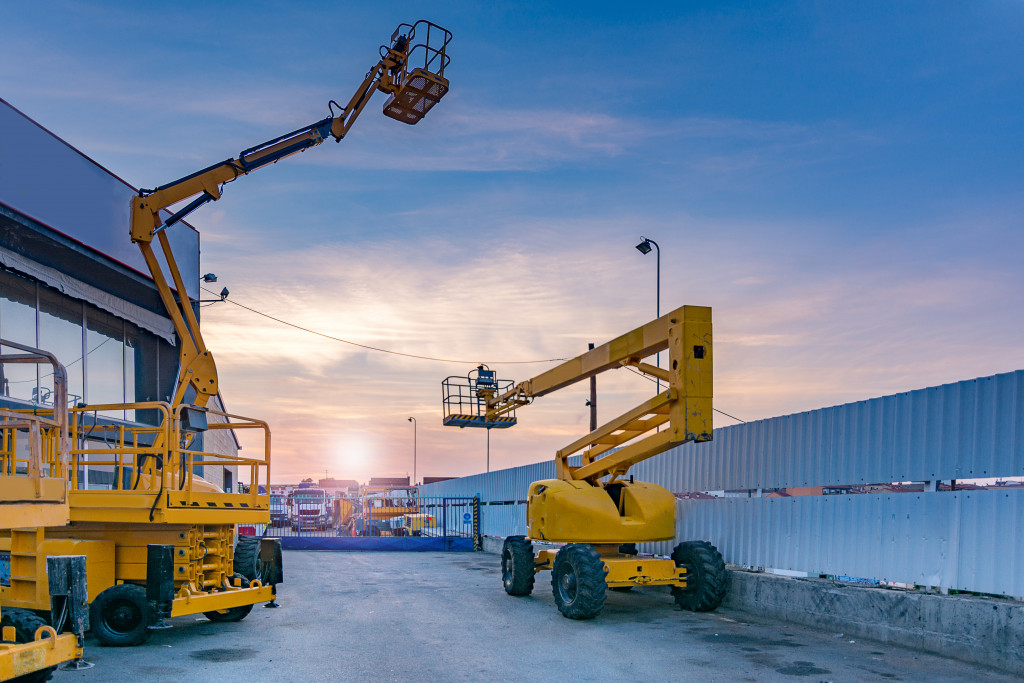• Provide construction workers with the necessary safety gear and equipment, such as safety harnesses, lanyards, scaffolds, and aerial lift protection devices.
• Enforce protocols for proper use of safety gear and regular inspections; non-compliance should result in disciplinary action.
• Train workers on fall protection, scaffolding setup and use, and rope access certification.
• Participate in the training to stay up-to-date on safety standards and ensure you are taking the necessary steps to protect your team.
Construction workers face a unique set of hazards on the job. From working in hazardous environments to operating heavy machinery, a lot can go wrong if safety protocols are not followed. One of the most serious accidents construction workers can face falling from a great height. In fact, according to a study, falls are the leading cause of fatalities in construction, accounting for more than one-third (36.4%) of all deaths on the job site.
Fortunately, you can make several essential investments to protect your construction workers from falls. Here’s a look at some of the most effective strategies.
Safety Gear and Equipment
The first step in preventing falls is providing workers with the right safety gear and equipment. As the employer, it is your responsibility to provide the following:
Safety Harnesses with Lanyards
Considered the most essential piece of safety gear, safety harnesses with lanyards are designed to prevent workers from falling from great heights. When worn properly, these devices attach workers to a solid anchor point with a tethering system to stop them from falling if they slip or lose balance. These should be made of high-quality material such as webbing or metal and inspected regularly for wear and tear.
Scaffolds
Scaffolding should be used at heights above two stories to provide a safe, secure surface and guard rail system. This is an essential investment that can significantly reduce the risk of falls.
Aerial Equipment Protection
Aerial lifts are important to reach elevated work sites but can also be dangerous if used incorrectly. That’s why it is important to invest in aerial equipment protection devices. These devices are designed to prevent workers from falling out of aerial lifts and can provide an additional layer of safety for those operating these machines.

Enforcement of Protocols
In addition to having the right safety gear and equipment on hand, it’s also important to enforce protocols for how your team members should use them. This includes the following:
Mandatory Use of Safety Gear
Safety gear should always be worn, no matter how short the job is. There shouldn’t be any excuses for using safety equipment, and non-compliance should result in disciplinary action.
Regular Inspections
Safety gear should also be inspected regularly to ensure it’s in good working condition. That includes harnesses, lanyards, scaffolding, and aerial lifts. Make sure these items are properly maintained and replaced when necessary. When needed, provide additional training to workers on how to use the equipment safely.
Training Your Team
Finally, it is essential that you invest in training for your staff, so they have the knowledge they need to stay safe while working at heights. Here are some of the basic training that your workers should receive:
Rope Access Certification
If your workers use rope access techniques to access difficult-to-reach areas, they should also be certified in this method. This will ensure that everyone understands the correct procedures for setting up and dismantling rigging systems, how to avoid hazards, and how to rescue themselves if needed.
Take a Refresher Course
To ensure everyone knows the latest safety protocols, you should provide refresher courses for your workers. This can be done in-house or through a qualified third-party instructor. You should also participate in this course to ensure you know the latest safety standards and that you are taking the necessary steps to protect your team.
Fall Protection Training

Your employees should be trained on the different types of fall protection gear available, how to properly use and inspect them, and what to do in an emergency. For instance, workers should know how to properly attach themselves to a lanyard and when they need additional safety measures.
Scaffold Training
If you use scaffolding, your team should be trained on the system’s proper setup, use, and maintenance. This includes identifying potential hazards such as corroded components or unstable footing.
Being in the construction business means you are responsible for protecting your workers from potential dangers. These necessary investments into safety gear, equipment, and training will ensure your team members can work safely. By following the tips above, you can reduce the risk of falls on your job site and create a safer workplace for everyone.

